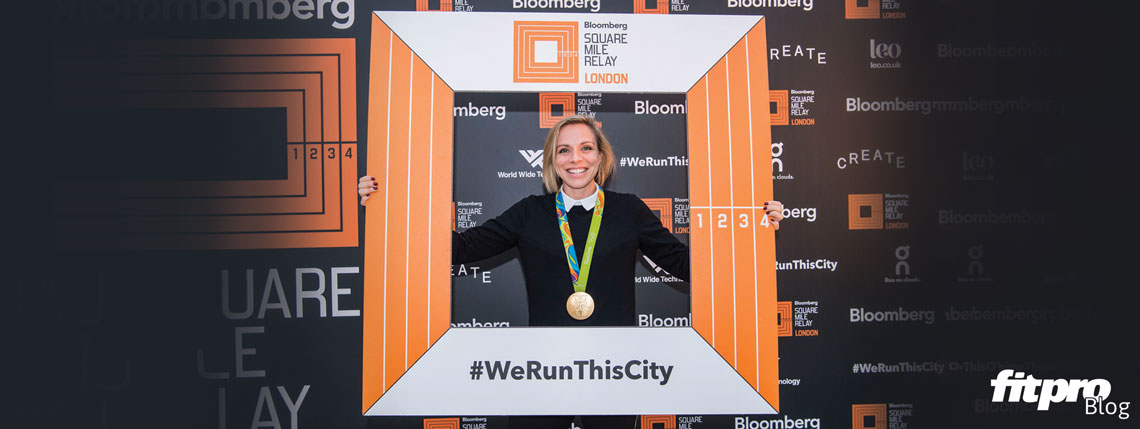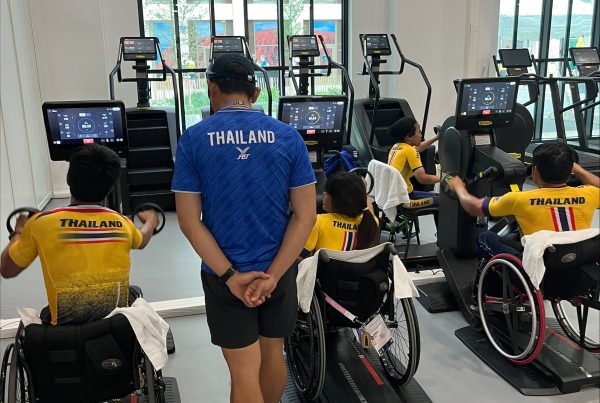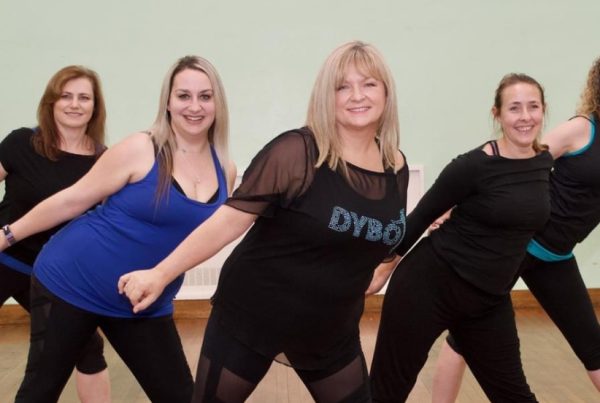FitPro caught up with the England Women’s Hockey captain after the Bloomberg Square Mile Relay in London. Kate Richardson-Walsh talks of beginnings, successes, and has plenty to say about fitness influencer, Joe Wicks.
FitPro: What do you love about the Bloomberg square Mile Relay London?
KR-W: I think it’s great to get people out of the corporate environment and working together as a team. They will learn things about each other that they never knew before and hopefully this will make them work together more collaboratively when they get back into the office.
FP: When you first started to play hockey, was there something in particular that you focused your improvement on?
KR-W: I was not a player you would pick out – I was an average-joe kind of player. I wasn’t a particularly good trainer either; I hated running because of the monotony of it. But I learned to love the disciplines, so concentration was a huge thing for me plus making sure I was focused when I trained.
FP: What is your first memory of the sport and, when you go back to Manchester, is there a place that reminds you of this?
KR-W: My first memory was watching my mum play hockey on the grass for Didsbury Greys down at Didsbury cricket club. My sister and I used to do our training around the cricket outfield. It’s a very special place for me – when I drive past the cricket club now, all the memories come flooding back.
FP: What was the most mentally demanding moment of captaining the side at the Rio Olympics?
KR-W: I think it was probably winning the semi-final; this was a big turning point for us. In the London Olympics, we lost our semi-final and therefore the chance of winning a gold medal. Therefore, getting through the semi-final in Rio was massive and we knew then that the gold medal could potentially be ours. It was a key moment for me to just go: ok, it’s just one more game, just re-focus on what we are here to do, don’t focus on the gold medal, just focus on what your job is, and everybody did that. It was incredible.
FP: Name your three favourite strength exercises to do in the gym.
KR-W: I love a chin-up, I don’t know why but I was born to do a chin-up. Even if I haven’t done them for a long time, I can still get through quite a few. I also really like squatting; getting on the squat rack really helped me strengthen a variety of key muscles in key areas. Finally, I like working my hamstrings, so either straight-leg deadlifts or Romanian deadlifts – I really enjoy getting the speed out of my hamstrings.
FP: How important is functional training as part of your fitness regime? Are there any pieces of equipment that you enjoy using?
KR-W: I used to enjoy using the sled and working on generating speed through a weighted sled and generating power through my acceleration. Certainly, as I’ve gotten older, it is something I really enjoy.
FP: Which new fitness trends, class concepts and equipment do you approve of?
KR-W: I’m currently following Joe Wicks’ body coach programme. I think HIIT sessions are great and can easily fit into your day with minimal equipment. I don’t think the people who live below our flat enjoy me stomping up and down, but it’s just a really fun way of getting your exercise done in the morning before cracking on with the rest of your day.
FP: Will you be embarking on any fitness challenges in your retirement?
KR-W: I want to get back into swimming. I used to swim a lot when I was younger and had to choose between swimming and hockey. Golf is another – my irons are ok but my driver is an absolute nightmare; it would be good to have some lessons.
FP: Leadership – what advice would you give to instructors and trainers who are new to leading a group session?
KR-W: I think everybody can lead. We make leadership a mystical thing, but anybody can do it. It’s about finding the way you need to do it; it’s not about just being loud and being the person who stands at the front. It’s about being aware of yourself and what you are good at and not good at, and being aware of the people you work with and their strengths and weaknesses. It’s important to have good values and integrity.
FP: Which fun games did the team play during training?
KR-W: I don’t think we enjoyed any of the fit sessions whatsoever! If there was ever a competitive element, this would get everybody motivated. We did do some fun stuff when we had to get our brains working. We used to do logical puzzles and similar games, which we enjoyed.
FP: How often do you experience yoga?
KR-W: I love yoga! I use yoga to switch off, particularly when I was playing hockey. I was doing up to three yoga sessions a week, so I could have 30mins or an hour in my own head space. Yoga helped us to uncurl – now I’ve stopped playing, I’m hoping to uncurl a bit more.
FP: What developments would you like to see happen in women’s sport in the next few years, and what developments are you most proud of to date?
KR-W: I would love to see lots of developments. I would love to open the newspaper on any given day and see some female athletes in there – it is still very rare! Things have changed and it is better around major events, but unless we have sport on a regular basis (men and women) on terrestrial TV and in all the national newspapers, then I don’t believe we have got to where we need to be. I do think things have changed for the better. When I look back to the start of my career in 1999, rarely would I switch on the TV and be able to see a female athlete. Social media has been amazing for raising awareness of female athletes – on Twitter and Instagram you can now see female role models.
FP: Do you think today’s PE teachers should be incorporating more fitness terminology within schools, and what initiatives have you been involved with to help get girls playing hockey?
KR-W: Being a PE teacher is a hard job. It is the career I would’ve chosen if I wasn’t a hockey player. My parents were both PE teachers and I think they do an incredible job. Joe Wicks does some really good stuff at the moment incorporating HIIT sessions into normal PE lessons – it’s quite short, but very intense. I think mixing it up is key, as not everybody loves team sports. The earlier we can install exercise as a habit, the longer people will do it. The whole squad is going to as many clubs and schools as possible to motivate girls – I would love for them to play hockey, but getting them exercising is the main thing.
Are you part of a running club with a difference? In the next issue of Fitpro magazine, we will be sharing five exciting running clubs that all have a unique offering.
Get in touch with us and let us know about yours: publish@fitpro.com







